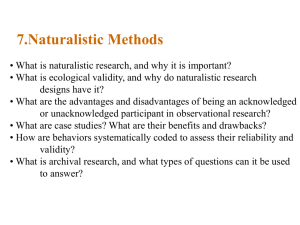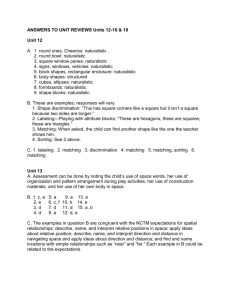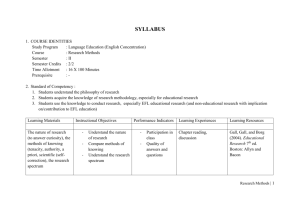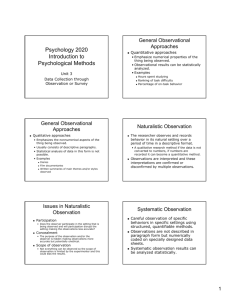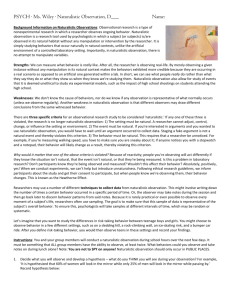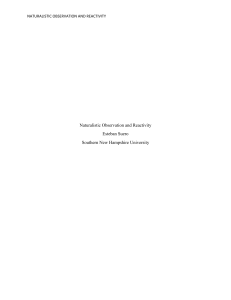Lecture 18: Observing Behavior
advertisement
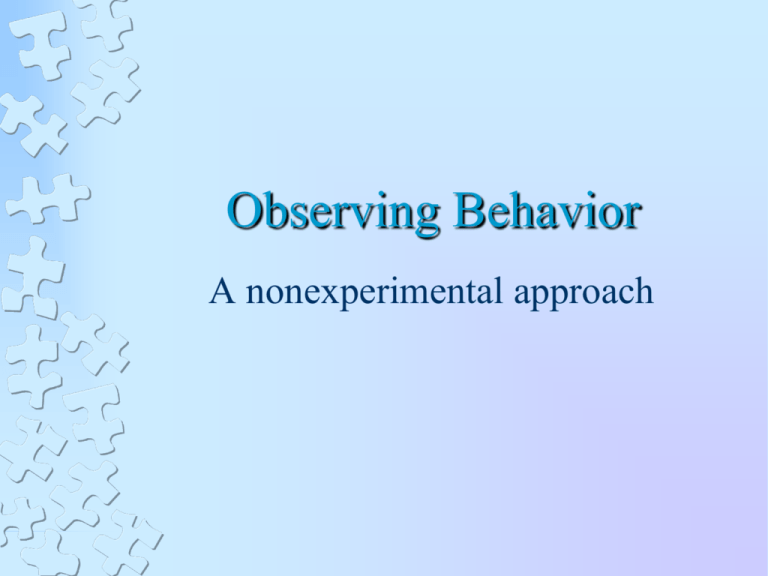
Observing Behavior A nonexperimental approach QUANTITATIVE AND QUALITATIVE APPROACHES Quantitative Focuses on specific behaviors that can be easily quantified Assign numerical values to responses Large samples Subject to the data statistical analyses QUANTITATIVE AND QUALITATIVE APPROACHES Qualitative Observational measures Focuses on behavior in natural settings Small groups and limited setting Describe or capture themes that emerge from the data Data are non-numerical and expressed in language and/or images NATURALISTIC OBSERVATION Field Work or Field Observation Researchers make observations in a natural setting over a period of time using a variety of techniques Used to describe and understand how people in a social or cultural setting live, work, and experience the setting NATURALISTIC OBSERVATION Description and Interpretation of Data Techniques include: - Observing, interviewing, and surveying documents Goals: - Describe setting, events, and persons - Analyze the categories that emerge - Researcher must interpret what occurred - Generate hypotheses that help explain the data - Write a final report of results NATURALISTIC OBSERVATION Issues in Naturalistic Observation 1. Participation 2. Concealment NATURALISTIC OBSERVATION • Strengths of Naturalistic Observation • Useful in complex and novel settings • Limitations of Naturalistic Observation • Cannot be used to study all issues • Less useful when studying well-defined hypotheses under precisely specific conditions • Must constantly reanalyze and revise hypotheses SYSTEMATIC OBSERVATION Systematic observations: careful observation of specific behaviors in a particular setting Coding Systems Methodological Issues Equipment Reactivity Reliability Sampling ARCHIVAL RESEARCH Archival research involves using previously complied information to answer research questions 1. Statistical Records 2. Survey Archives 3. Written and Mass Communication Records
